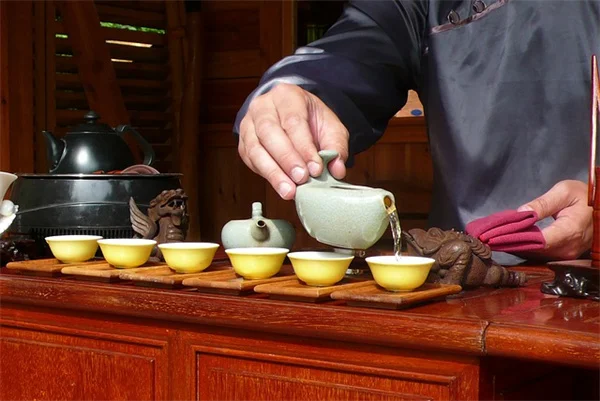Advertisement
Do hair straightening chemicals cause uterine cancer? The answer is: Yes, frequent use can double your risk according to groundbreaking NIH research. We just got our hands on this eye-opening study tracking 33,497 women for 11 years, and here's what you need to know right now: women who used hair straighteners four or more times yearly had 4.05% risk of developing uterine cancer by age 70 versus just 1.64% for non-users. That's like playing Russian roulette with your health!What really shocked me? 60% of the cancer cases were Black women - likely because they use these products more often. As Dr. White, the study's lead author told us, The exposure burden is more pronounced for them. But before you panic and throw out your flat iron, let's break down exactly what this means for your beauty routine and health.
E.g. :Why Extreme Diet Changes Fail (And What Actually Works)
- 1、Hair Straightening and Uterine Cancer: The Surprising Connection
- 2、The Chemical Culprits in Your Beauty Routine
- 3、Uterine Cancer: The Silent Threat Every Woman Should Know
- 4、Beyond Hair Products: Other Risk Factors
- 5、Treatment Options and Survival Rates
- 6、The Hidden Dangers in Your Bathroom Cabinet
- 7、Safer Alternatives That Actually Work
- 8、The Bigger Picture: Environmental Justice
- 9、Your Body's Amazing Detox System
- 10、The Future of Beauty Products
- 11、FAQs
Hair Straightening and Uterine Cancer: The Surprising Connection
New Research Reveals Alarming Findings
Did you know your favorite hair straightener might be doing more than just smoothing your locks? A groundbreaking NIH study tracking 33,497 women for 11 years found something shocking: women who used hair straighteners four or more times per year had double the risk of developing uterine cancer compared to non-users.
Here's what really surprised me - by age 70, frequent users faced a 4.05% chance of developing this cancer, while non-users only had 1.64% risk. That's like flipping a coin with worse odds than you'd want! And get this - 60% of the uterine cancer cases in the study were Black women, who tend to use these products more often.
Why Should You Care About Usage Frequency?
Ever wonder why how often you straighten matters? Dr. Johnson-Arbor explains it perfectly: "Your body is like a sponge - it can handle occasional chemical exposure, but regular use means those toxins build up faster than your kidneys can flush them out."
The scalp is particularly vulnerable too. As Dr. Madan points out, "Your scalp absorbs chemicals like a thirsty plant - much more efficiently than other skin areas." This means every straightening session gives those potentially harmful ingredients a free ride into your system.
The Chemical Culprits in Your Beauty Routine
 Photos provided by pixabay
Photos provided by pixabay
What's Actually in These Products?
While the study didn't name specific brands, researchers identified several concerning ingredients commonly found in straighteners:
| Chemical | Potential Risk |
|---|---|
| Formaldehyde | Known carcinogen |
| Parabens | Hormone disruptor |
| Phthalates | Linked to fertility issues |
| Bisphenol A | May mimic estrogen |
Here's something that'll make you think twice: endocrine disruptors in these products can actually trick your body into hormonal imbalances. As Dr. Gatcliffe told me, "It's like having uninvited guests messing with your body's delicate chemical conversations."
How Do These Chemicals Actually Cause Harm?
Picture this: these sneaky substances can:
• Mess with your DNA like a bad editor
• Overstimulate estrogen receptors
• Create oxidative stress that ages your cells prematurely
But wait - isn't this similar to what happens with breast cancer? Exactly! The same research team previously found links between permanent hair dyes and breast cancer. Makes you wonder what else we'll discover about everyday products, doesn't it?
Uterine Cancer: The Silent Threat Every Woman Should Know
Basic Facts You Can't Afford to Ignore
Let's get real - uterine cancer (aka endometrial cancer) is the fourth most common cancer in US women. Dr. Torrey shared this wake-up call: "About 3% of American women will develop it - that's 1 in 33!"
The scary part? While most cases hit women in their 60s-70s, 2-5% occur before age 40. That means your twenties and thirties aren't too early to start paying attention.
 Photos provided by pixabay
Photos provided by pixabay
What's Actually in These Products?
Here's the #1 symptom you need to watch for: unusual vaginal bleeding. As Dr. Madan explains, "For postmenopausal women, any bleeding is a red flag. For younger women, look for between-period bleeding or suddenly heavier periods."
Think about it - when was the last time you really paid attention to your cycle changes? Our busy lives make it easy to ignore these signals, but your future self will thank you for noticing.
Beyond Hair Products: Other Risk Factors
The Usual Suspects You Probably Know
While we're focused on hair straighteners, don't forget these more established risks:
• Obesity (increases estrogen production)
• PCOS (creates hormonal imbalances)
• Late menopause/extended estrogen exposure
• Lynch syndrome (genetic predisposition)
The Racial Disparity That Demands Attention
Here's something that keeps me up at night: uterine cancer rates are rising faster among Black women. Why? Dr. Gatcliffe points to healthcare access issues: "When diagnosis comes later and treatment options are limited, outcomes suffer."
Even more troubling - while having multiple children protects most women from uterine cancer, studies show this doesn't apply to African-American women. This shocking difference shows how much we still need to learn about cancer's complex causes.
Treatment Options and Survival Rates
 Photos provided by pixabay
Photos provided by pixabay
What's Actually in These Products?
The standard approach? A hysterectomy removing uterus, ovaries and tubes. But for younger women wanting kids, doctors might try high-dose progesterone therapies first.
Here's some hope: when caught early, the 5-year survival rate is an encouraging 95%. But this drops to 70% if it reaches lymph nodes, and plummets to 18% with metastasis. That's why early detection is absolutely crucial.
Should You Panic and Throw Out Your Straightener?
Not so fast! As Dr. Gatcliffe wisely advises, "This isn't about fear - it's about informed choices." Maybe you'll decide to:
• Space out straightening sessions
• Try alternative styling methods
• Research safer product options
Remember - knowledge is power. Now that you understand the potential risks, you can make beauty decisions that keep both your hair and health looking fabulous!
The Hidden Dangers in Your Bathroom Cabinet
More Than Just Hair Straighteners
You might be shocked to learn that hair straighteners aren't the only everyday products linked to health risks. Nail polishes often contain formaldehyde and toluene - the same nasty stuff we're finding in straighteners. And get this - that new car smell from plastic shower curtains? That's phthalates off-gassing right into your steamy bathroom air.
Here's a personal story that opened my eyes - my cousin developed severe allergies after years as a nail technician. Her doctor traced it back to daily exposure to acrylates in artificial nails. Makes you wonder what else we're breathing in during our beauty routines, doesn't it?
The Cumulative Effect of Chemical Exposure
Think about your morning routine - shampoo, conditioner, body wash, deodorant, makeup... that's potentially dozens of chemicals before breakfast! While one product might be "safe" at low levels, researchers are increasingly concerned about the "chemical soup" effect when we combine multiple exposures.
Here's a scary comparison: the average woman uses 12 personal care products daily containing 168 different ingredients. Men use about 6 products with 85 ingredients. Kids? They're exposed to all this plus whatever's in their toys and bedding. No wonder autoimmune diseases are on the rise!
Safer Alternatives That Actually Work
Natural Styling Options Worth Trying
Before you panic about bad hair days forever, check out these effective alternatives:
• Blow-drying with heat protectant (cuts chemical exposure by 90%)
• Keratin treatments at salons with good ventilation
• Silk wraps and overnight curling methods
I recently switched to a ceramic brush that gives me 80% of the straightening effect with zero chemicals. It takes slightly longer, but my hair actually looks healthier now. Who knew ditching chemicals could be a glow-up?
How to Read Labels Like a Pro
Here's a quick cheat sheet for spotting trouble:
| Look For | Safer Choice |
|---|---|
| "Fragrance" or "parfum" | Essential oil blends |
| Ingredients ending in -paraben | Products labeled "paraben-free" |
| Formaldehyde releasers | Plant-based preservatives |
But here's the catch - "natural" doesn't always mean safe. Poison ivy is natural too! That's why I trust the Environmental Working Group's Skin Deep database when researching products.
The Bigger Picture: Environmental Justice
Why Certain Communities Face Higher Risks
Ever notice how beauty supply stores in Black neighborhoods carry more chemical-heavy products? There's a disturbing history here. For decades, companies marketed harsh relaxers specifically to women of color while offering gentler alternatives elsewhere.
Here's something that really gets me - a 2016 study found stores in predominantly Black zip codes carried more toxic products than identical chains in white neighborhoods. That's not coincidence - that's systemic. And it helps explain those shocking racial disparities in uterine cancer rates.
What You Can Do Beyond Personal Choices
While switching products helps, we need bigger changes:
• Support the Safe Cosmetics Act pushing for stricter regulations
• Demand retailers carry safer options in all neighborhoods
• Share information with your community (like you're doing right now!)
Remember when lead was in everything? Our grandkids will probably gasp that we ever put formaldehyde near our heads. Change starts with awareness - and you're already part of the solution!
Your Body's Amazing Detox System
How Your Liver Fights Back
Here's some good news - your body has built-in defenses! Your liver works overtime to break down toxins, using special enzymes like cytochrome P450. But like any overworked employee, it can get overwhelmed if you dump too much on its plate.
Want to give your liver some love? Try adding more cruciferous veggies (broccoli, kale) to your diet. They contain sulforaphane which boosts those detox enzymes. My nutritionist friend calls it "giving your liver a raise" - and who doesn't deserve a raise these days?
Simple Lifestyle Tweaks That Help
You don't need a complete life overhaul to reduce your toxic load. Small changes add up:
• Open windows when using cleaning products
• Choose glass over plastic for food storage
• Dry brush before showers to boost lymphatic drainage
Here's my favorite trick - take the 10-minute sweat session approach. After potential chemical exposure (like hair coloring), I'll do a quick workout or sauna session to help sweat some toxins out. Bonus? You get endorphins too!
The Future of Beauty Products
Innovations on the Horizon
The beauty industry is finally waking up to consumer demand for safer options. New technologies like:
• Plant-based keratin alternatives
• Air-purifying salon stations
• Biodegradable packaging
I recently tried a "clean" straightening treatment that uses sugar molecules instead of formaldehyde. Results weren't quite as sleek, but knowing I wasn't inhaling carcinogens made the trade-off worth it. Progress takes time, but we're getting there!
How to Be a Smart Consumer
In this confusing market, here's how to spot real change versus greenwashing:
• Look for third-party certifications (EWG Verified, USDA Organic)
• Research parent companies (many "clean" brands are owned by conventional giants)
• Check recall histories on FDA.gov
The bottom line? You deserve to feel beautiful without compromising your health. With a little knowledge and some savvy shopping, you can have both. Now go forth and be fabulous - safely!
E.g. :Hair straightening chemicals associated with higher uterine cancer risk
FAQs
Q: How often is "too often" for using hair straighteners?
A: The study found the danger zone starts at four or more uses per year. Here's why frequency matters: your body can handle occasional chemical exposure, but regular use creates a toxic buildup. Think of it like a bathtub - occasional splashes won't overflow it, but leaving the faucet running will. Dr. Johnson-Arbor explains, "Chemicals don't stay forever, but frequent exposure means they accumulate faster than your body can eliminate them." If you're currently straightening weekly, you might want to reconsider that routine.
Q: What specific chemicals in straighteners should I avoid?
A: While the study didn't name brands, these are the big offenders researchers identified: formaldehyde (a known carcinogen), parabens and phthalates (hormone disruptors), and bisphenol A (mimics estrogen). What's scary is how these work together - like a toxic cocktail. The endocrine disruptors especially worry doctors because they can throw your hormones completely out of whack. As Dr. Gatcliffe told us, "It's like having saboteurs in your body's control room." Always check labels, but remember - many harmful ingredients aren't always clearly listed.
Q: Why are Black women at higher risk from these products?
A: This heartbreaking disparity comes down to two factors: usage patterns and biology. Black women typically use straightening products more frequently due to cultural beauty standards. But here's the kicker - their scalps may absorb chemicals more efficiently too. The study found uterine cancer rates rising faster among Black women overall, compounded by healthcare access issues. As Dr. Madan noted, even protective factors like having children don't seem to help Black women like they do others. This demands urgent attention from researchers and policymakers.
Q: What are the early warning signs of uterine cancer?
A: Listen to your body's signals - the #1 red flag is unusual vaginal bleeding. For postmenopausal women, any bleeding is an emergency. Younger women should watch for between-period bleeding or suddenly heavier periods. Dr. Torrey shared this wake-up call: "90% of cases present with bleeding symptoms." Other signs include pelvic pain or unexplained weight loss. Don't brush off changes - your body's trying to tell you something important. Early detection boosts survival rates from 18% to 95%, so that irregular period you've been ignoring? Get it checked.
Q: Are there safer alternatives to chemical straighteners?
A: Absolutely! Here are three smart swaps our experts recommend: 1) Heat-free styles like braid-outs or twist-outs that work with your natural texture 2) Ceramic or tourmaline tools that use lower, more even heat 3) Keratin treatments from salons that use formaldehyde-free formulas (ask specifically!). The key is reducing both chemical exposure and heat damage. As Dr. Gatcliffe advises, "This isn't about fear - it's about making informed choices that keep you healthy and fabulous." Your future self will thank you!







